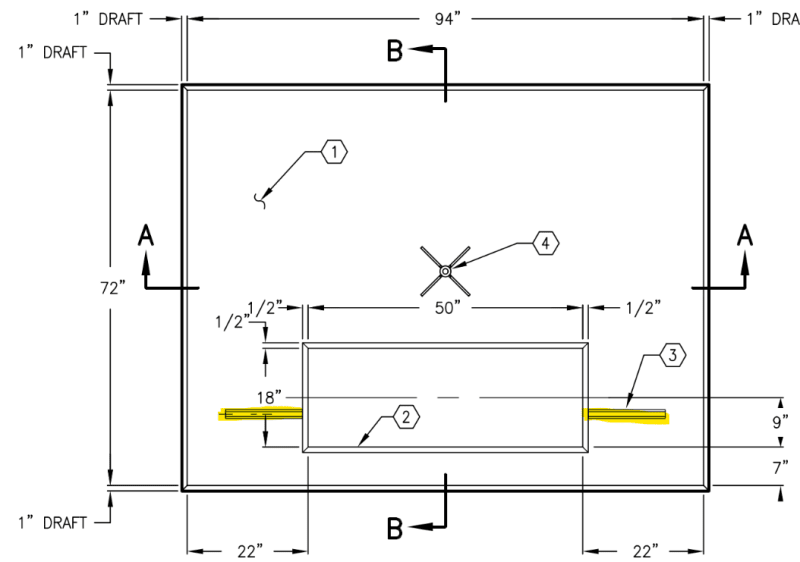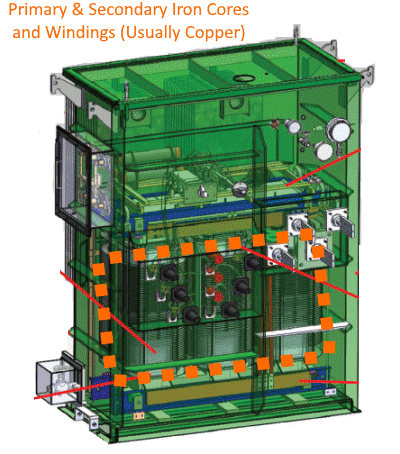driftLimiter
Structural
Hey engineers,
Hoping to find someone with more experience in this to help with my understanding.
We have a transformer roughly specified by the electrical engineer on his drawings. The transformer and pad are both utility provided, but the plan reviewer (AHJ) is requiring a structural calc and detail for the unit and pad.
Normally I'd say great let me have the cut sheet and just continue with my calcs. This is a reasonably high seismic area, overturning and sliding aught to be resisted by the anchorage (thats my normal approach anyway).
In this case, the utility wont provide specific information until the AHJ approves the design, and the AHJ wont approve the design without specific information. So its been left to me to skate between them and document something to get the ball rolling.
The Specifics....
I have a rough idea of the size of the transformer, and its weight. Also there is a typical precast pad provided to attach the deal.
But when I inspect the information things start getting stranger.

Item 3 I highlighted is the location where the utility says the anchorage will go.
The transformer manufactures are affectionately calling this 'cabinet security anchorage'.
Hard for me to see how this single line of fasteners is going to be useful to resist any seismic overturning.
Which leads me to think that these units don't have a major tipping concern due to seismic. I.e. the CG is perhaps quite low to the ground.
Some major questions are:
1.) Does the utility normally provide a seismic review of the equipment the supply? I imagine they are concerned with seismic in general I don't know how they could not be.
2.) As far as I can tell the anchorage channel is just a unistrut cast in by the precasters, where can I attempt to find strength values for anchorage into these channels?
3.) Does anyone have a feel for the relative CG height of a three phase pad mounted liquid filled transformer? Approx weight is 5000#.
I've been spinning my wheels on this for a while and its still just muddy. One idea we had was to simply make some assumptions and design a cast in place solution, then let the utility come later and submit something different. Perhaps then we will have more specific info on the transformer and can asses the anchorage. Even still I have my doubts that this precast pad arrangement is capable of resisting much overturning load at all because there is only 1 line of fasteners.
Thanks in advance.
DriftLimiter
Hoping to find someone with more experience in this to help with my understanding.
We have a transformer roughly specified by the electrical engineer on his drawings. The transformer and pad are both utility provided, but the plan reviewer (AHJ) is requiring a structural calc and detail for the unit and pad.
Normally I'd say great let me have the cut sheet and just continue with my calcs. This is a reasonably high seismic area, overturning and sliding aught to be resisted by the anchorage (thats my normal approach anyway).
In this case, the utility wont provide specific information until the AHJ approves the design, and the AHJ wont approve the design without specific information. So its been left to me to skate between them and document something to get the ball rolling.
The Specifics....
I have a rough idea of the size of the transformer, and its weight. Also there is a typical precast pad provided to attach the deal.
But when I inspect the information things start getting stranger.

Item 3 I highlighted is the location where the utility says the anchorage will go.
The transformer manufactures are affectionately calling this 'cabinet security anchorage'.
Hard for me to see how this single line of fasteners is going to be useful to resist any seismic overturning.
Which leads me to think that these units don't have a major tipping concern due to seismic. I.e. the CG is perhaps quite low to the ground.
Some major questions are:
1.) Does the utility normally provide a seismic review of the equipment the supply? I imagine they are concerned with seismic in general I don't know how they could not be.
2.) As far as I can tell the anchorage channel is just a unistrut cast in by the precasters, where can I attempt to find strength values for anchorage into these channels?
3.) Does anyone have a feel for the relative CG height of a three phase pad mounted liquid filled transformer? Approx weight is 5000#.
I've been spinning my wheels on this for a while and its still just muddy. One idea we had was to simply make some assumptions and design a cast in place solution, then let the utility come later and submit something different. Perhaps then we will have more specific info on the transformer and can asses the anchorage. Even still I have my doubts that this precast pad arrangement is capable of resisting much overturning load at all because there is only 1 line of fasteners.
Thanks in advance.
DriftLimiter

